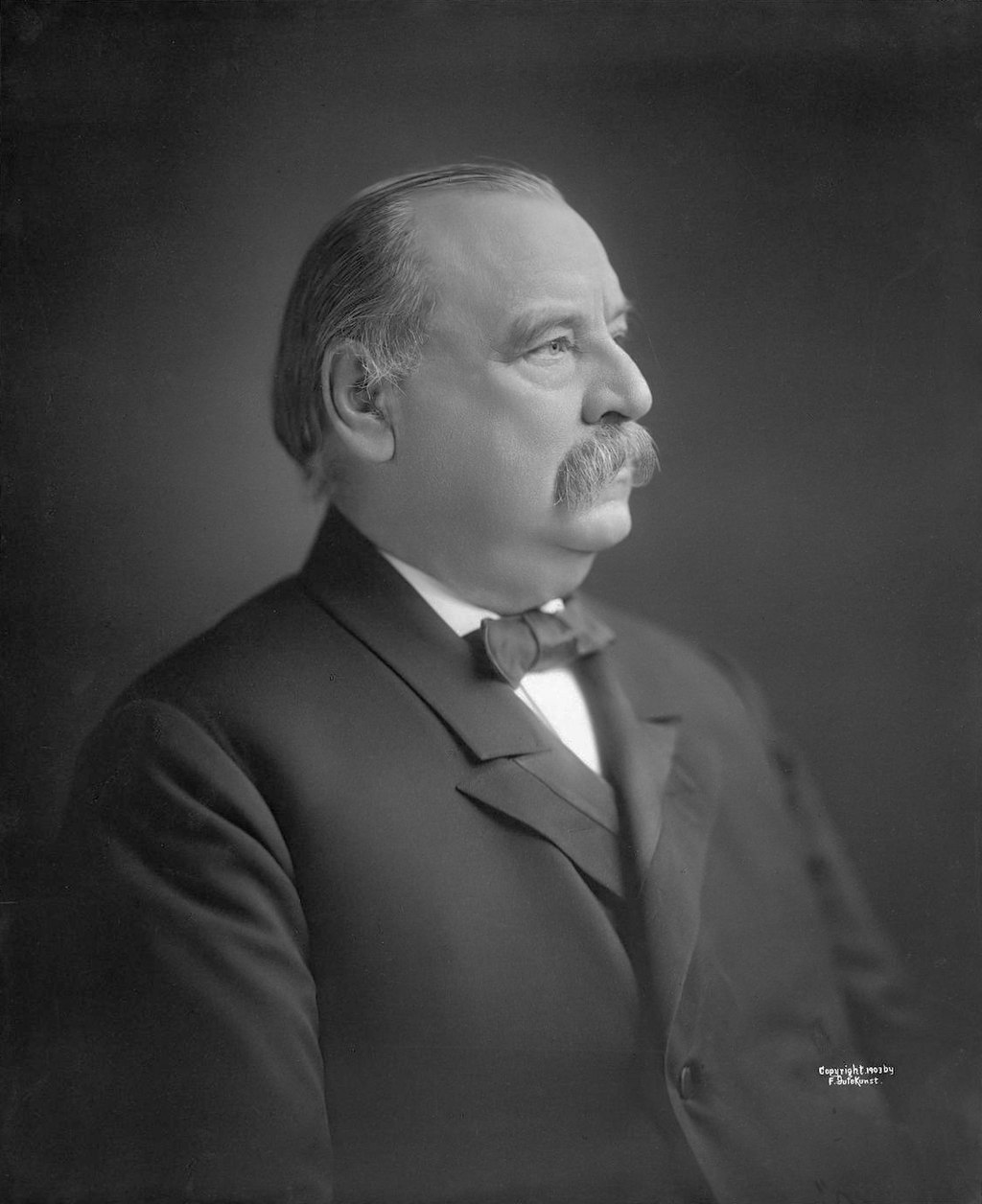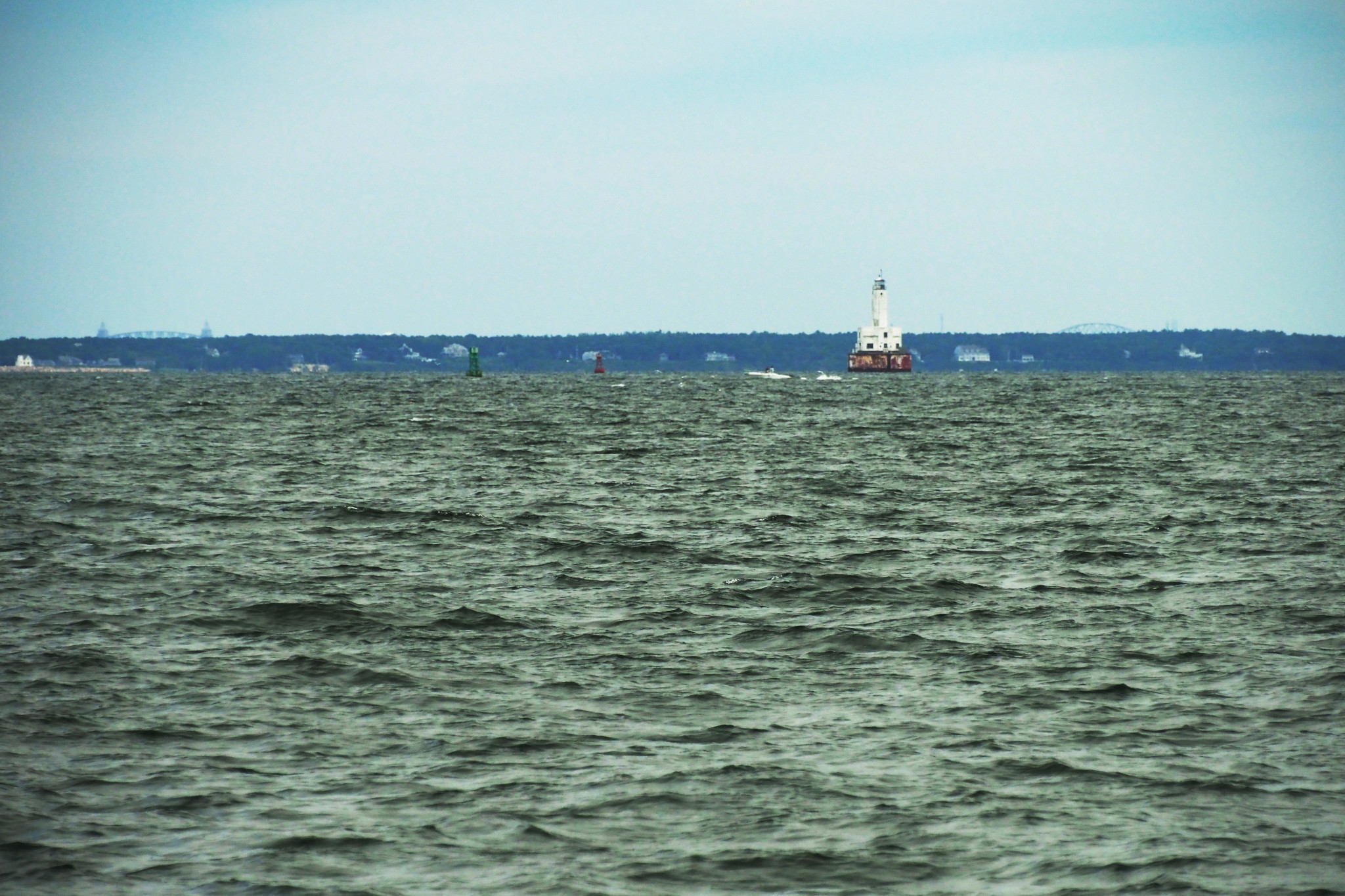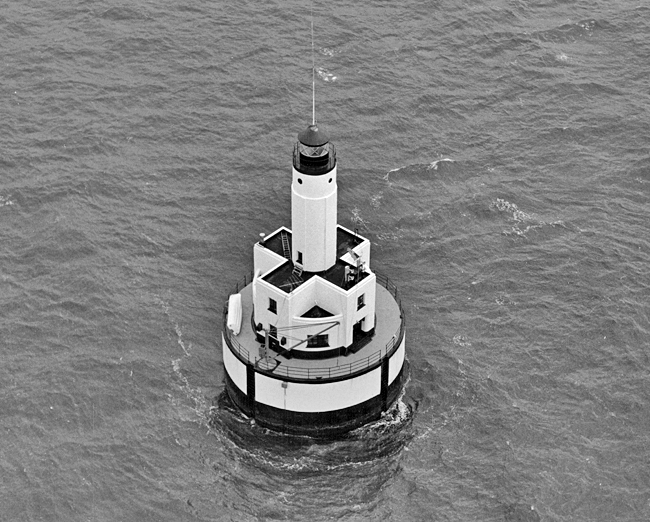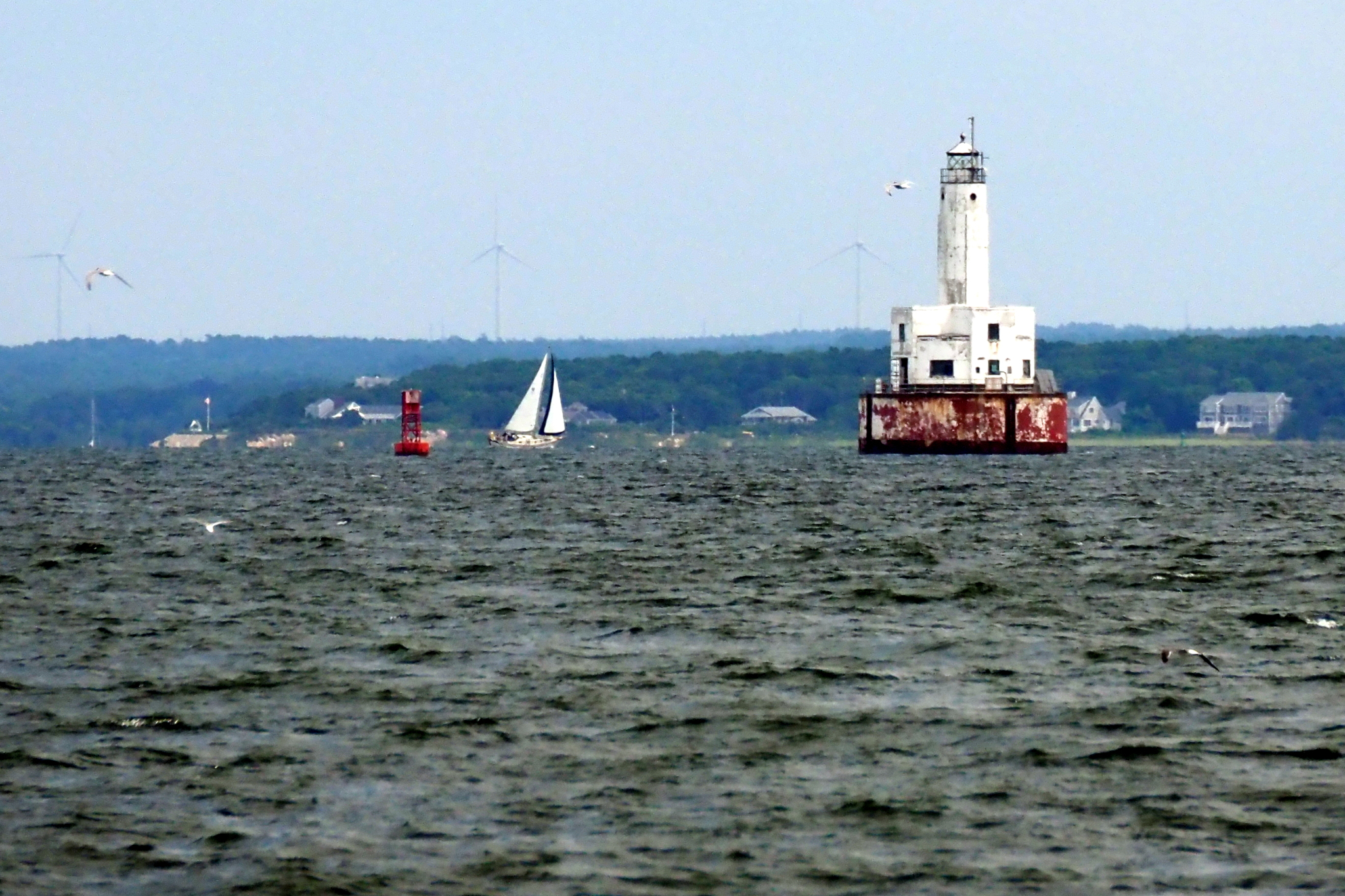Cleveland Ledge Light
It was the first day of our long awaited cruise in Buzzard Bay. We negotiated the long and narrow channel out of Sippican Harbor and set the course across the bay, to the Elizabeth Islands. We could not ask for better weather: windy, warm and sunny.
As we heeled closed-hauled, feeling elated that the cruise was actually happening and were finally able to leave all the stress and all the worries of land life behind for a week, there was something tall and distant, rising above the horizon in the general direction of our heading.
“What’s that?” asked Sergey. “Maybe a mast,” shrugged I. “No, definitely not a mast,” responded Sergey (his eyes are much better than mine). “Could it be a lighthouse, by any chance?”
And sure enough, soon we could see a lighthouse clearer and clearer. It was Cleveland Ledge Light, situated in the middle of Buzzards Bay — one of those rare lighthouses completely surrounded by water.
Cleveland Ledge Light was caused into existence by the Cape Cod Canal, which was first dug in 1914 and since then went through a number of iterations, getting wider, deeper, straighter, and changing the ownership to the U.S. government and U.S. Army Corps of Engineers. This unusual ownership was originally caused by few incidents during World War I when German submarines were harassing shipping traffic outside of Cape Cod. The channel suddenly achieved a strategic significance.
When all was done by 1940, the canal could accomodate largest sea-going ships, and it suddenly turned Buzzards Bay from a dead end bay used only for local navigation to a major shipping channel between Boston and New York, and all the way north and south along the East Coast.
The new marine traffic required new navigation aids, and in 1939 the federal government gave out a contract for the construction of a lighthouse at Cleveland Ledge. Cleveland Ledge is named after President Grover Cleveland (1995–1889, 1893–1897), the only president so far who served two non-consecutive terms. Cleveland had his “summer White House” in Falmouth, and liked to fish in Buzzards Bay, in particular atop of a shallow ledge which is now called Cleveland Ledge.

More importantly, this is where a dredged channel towards Cape Cod Canal begins. As you travel north, it’s called Cleveland Ledge Channel first, then Hog Island Channel, and then you are in the canal. Next stop: Cape Cod Bay on the other side.
The lighthouse construction was delayed by the war-induced shortages, but it was finally lighted on June 1, 1943. Today it’s flashing every 10 seconds.
To the left of Cleveland Ledge Light on this photo you can see the red and green buoys of the approach channel. Cape Cod Canal itself is behind the trees, parallel to the coastline; the tops of two bridges — railroad bridge and Bourne Bridge — are vaguely visible above the trees.

Cleveland Ledge Lighthouse is the only New England lighthouse built in the architectural style of Art Moderne — a streamlined variation of Art Deco. It was the first Art Moderne lighthouse in New England: the Coast Guard wanted to signal that the era of old, traditional lighthouses was over, and the era of new, modern, streamlined lighthouses was beginning.

Alas, that was not meant to happen. Cleveland Ledge Light, the first Art Moderne lighthouse in New England, turned out to be the first, the last and the only one. Moreover, it turned out to be the last major lighthouse built in New England. The age of lighthouses was rapidly coming to an end.
Symbolically — and sadly — Cleveland Ledge Light shared the fate of many other, older lighthouses. The Coast Guard lost interest in it and tried to give it away to any non-profit who would take it in 2007. The lighthouse structure was not maintained well, and by that time the it fell into disrepair. The new owner would’ve needed to invest a lot of into it, and so not much interest materialized. The Coast Guard eventually put it on an auction in 2010.
The auction winner was a businessman from California by the name of Sandy Boyd, the owner of “a dozen or so coffeehouses on the West Coast”. Boyd purchased the lighthouse for $190,000. Since then, he apparently filed for necessary permits to convert the lighthouse building into a residential house for himself.
Meanwhile, the light itself is still operated by the Coast Guard, and still is an active navigation aid. Cleveland Ledge Light is still a stylish sight; not nearly as dramatic as Minot Light, but equally rising out of the sea water. The only time I had sailed past it previously was at night, in the dark; that explains why I didn’t recognized it on our trip.
Obviously, I’ll never make this mistake again. Cleveland Ledge Light is unique and, once you have seen it, immediately recognizable.
We did see it again, as we were coming back on the last day of our cruise and crossing Buzzards Bay in the opposite direction. It was as unique as before, and this time I didn’t confuse it with a mast, not even for a second.

Subscribe via RSS